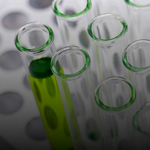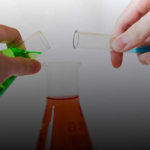Section 1
Preview this deck
Anton Van Leeuwenhoek
Front
Active users
0
All-time users
0
Favorites
0
Last updated
4 years ago
Date created
Mar 1, 2020
Cards (58)
Section 1
(50 cards)
Anton Van Leeuwenhoek
invinted the microscope. first to observe cells
eukaryotic cell
if a cell contains a nucleus it must be a
chlorophyll
Green pigments that traps light energy from the sun
plasma membrane
the structure most responsible for maintaining cell homeostasis is the
homeostasis
the process of maintaining the cells enviroment
endoplasic reticulum
A network of double membranes that helps to move materials through the cytoplasm is the
organelles
scientist have discovered that cells contain smaller specialized structures known as
rudolf virchow
Composed the Cell theory
chromoplast
when a tomato ripens and changes color form green to red, the chloroplasts uses chlorophyll and becomes a
muscle cell
in what cell is there more mitochiondria found than any place in your body?
cell wall
nonliving structures, protects and supports plant cells
plasma membrane
serves as a boundary between the cell and its external environment.
Hooke
the scientist who discovered the honey comb structure of cells was
grana
in a chlorolast, the stacks of membranous sacs are called
tissues
A group of cells similar in structure and activity
Matthias Schliden
first to observe living plant cells
chloroplast
photosynthesis takes place in this organelle of the plant cell
by bone marrow
how are red blood cells produced?
plant cell
if a cell contains a nucleus it must be a
Robert Hooke
named the cell
ribosome
the spherical organelles that are the site of protein synthesis in a cell are
cell theory
the cell is the unit of structure and function of all living things
ATP
A high energy formed inside mitochindria
tonoplast
membrane surrounding a vacuole
nucleus
contains the cells dna and manages the cells functions,
centrioles
function in reproduction in eukaryotic animal cells.
eukaryotes
cells that contain nuclei and organelles
mitochondria
organelles in which food molecules is broken down to produce ATP.
glycogen
What would not be found in a cell's plastids?
perioxisomes
neutralize potentially dangerous molecules within the cell sometimes forming hydrogen peroxide
chromosomes
when a cell is ready to reproduce, its dna is packed into
eukaryote
Cell having a nucleus and other membrane bound organelles
chloroplasts
organelles that form carbohydrates in plant cells are
cellulose
cell walls of multicellular plants are composed mainly of what?
cilia
short; hairlike projections on a cell's surface that are composed of microtubles
prokaryotes
cell lacking a nucleus or other membrane-bound organelles
mitochondria
"Power house" of the cell, furnishes energy too the cell.
van leeuwenhoek
the scientist who first discovered living cells as seen through a simple microscope was
organ system
several organs working together
mitochondria
rod-shaped organelles, centers of respiration
vacuole
Fluid-filled space within the cytoplasm; temporarily stores food
theodore schwan
First too observe living animal cells
lysosomes
cell structures that contain digestive enzymes are
Golgi apparatus
membrane sacs that receive and package proteins
phospholipid bi-layer
a plasma membrane is made up of a
cell wall
rigid structure outside the plasma membrane of plant cell
prokaryote
organisms without a nucleus such as bacteria and blue-green algae
lysosome
organelles is involved in the digestion of other worn-out organelles?
ribosomes
proteins are assembled by which organelles?
PLASMA MEMBRANE "Heads" -lipids "Tails"-phospholipids
these molecules have head and tails and are found in a cell membrane.
Section 2
(8 cards)




